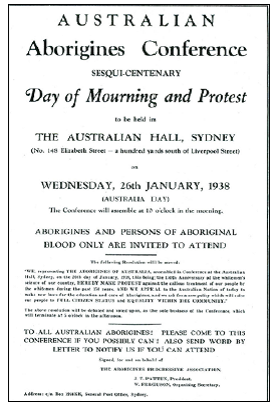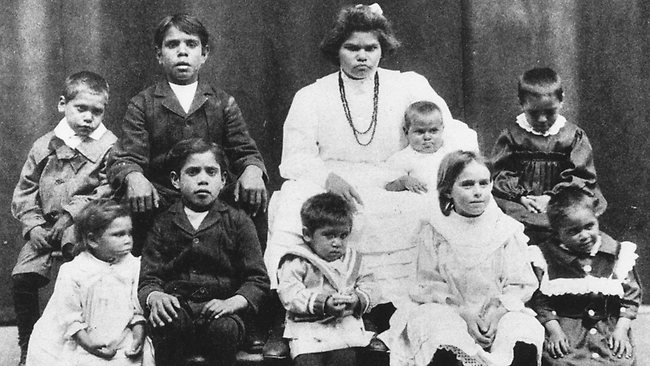Aboriginal and Torres Strait Islander peoples prior to 1945
day of mourningOne of the most famous protests prior to 1965
was the Day of Mourning. To coincide with the 150th anniversary of European colonisation on 26 January 1938, Aboriginal leaders including Jack Patten, William Cooper, William Ferguson and Doug Nicholls organised a protest to stand as a contrast with Australia Day celebrations. The Day of Mourning began with a march from Sydney Town Hall through the streets of Sydney, attended by Aboriginal and non-Aboriginal people, and concluded at the Day of Mourning Congress, attended by Aboriginal people only. assimilation policiesThe Assimilation policy was a policy of absorbing Aboriginal people into white society through the process of removing children from their families. The ultimate intent of this policy was the destruction of Aboriginal society
|
cummeragunja walk-offThe Cummeragunja Walk-off was a famous
protest in 1939, in which Aboriginal people living at the Cummeragunja Mission staged a walk-off in protest at their living conditions. The Cummeragunja Mission, situated on the banks of the Murray River in NSW, was home mostly to Yorta Yorta people, who lived in the area and had been forced to move there. In 1938, however, people became unhappy with the management of the mission, and their treatment – living conditions were poor and there were tight restrictions on daily movements. On 4 February, Jack Patten was arrested and removed from the mission for trying to address the people living there, as he was hoping to get their point of view across to the NSW Aborigines Protection Board. In response, around 200 people crossed the Murray River into Victoria, contravening laws set out by the NSW Protection Board restricting the movement of Aboriginal people. Many of the people from Cummeragunja had been involved with the Aborigines Advancement League, including Doug Nicholls, William Cooper, Eric Onus, Bill Onus, Kaleb Morgan, Shadrach and Thomas James, Marge Tucker and Ebenezer Lovett. Although some residents returned to the mission after the walk-off, most never returned, instead moving to places such as Barmah, Echuca, Shepparton, Mooroopna and Fitzroy. In 1953 the NSW Protection Board decided to close the mission due to the low number of people living there. |


